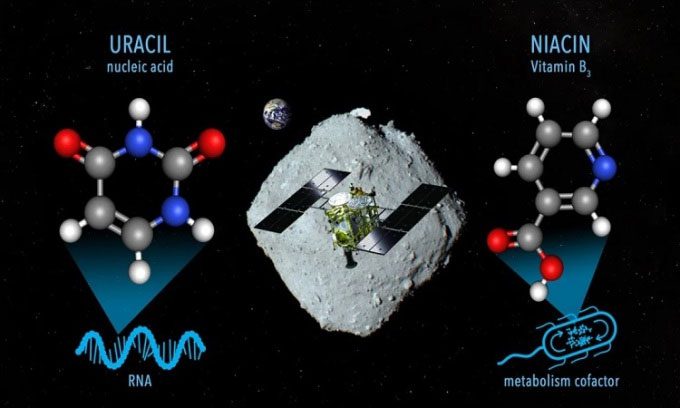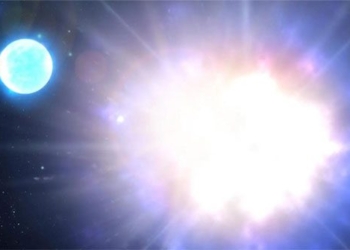Organic Molecules Discovered in Samples Collected from the Asteroid Ryugu by Japan’s Hayabusa2 Spacecraft.
Researchers have analyzed samples from the asteroid Ryugu collected by Japan’s Hayabusa2 spacecraft and found uracil, one of the building blocks of RNA, a molecule that contains instructions on how living organisms are constructed and function. Additionally, they also discovered nicotinic acid, also known as niacin or vitamin B3, an essential factor for metabolism in living organisms, in the same samples.

Some organic molecules found in samples from Ryugu. (Image: JAXA).
The findings from the international research team, led by Associate Professor Yasuhiro Oba at Hokkaido University, provide further evidence that crucial building blocks of life are formed in space and can be delivered to Earth via meteorites. They announced their discovery on March 21 in the journal Nature Communications.
Ryugu is a diamond-shaped carbon-rich asteroid that spans one kilometer. Hayabusa2 is the first mission to bring samples from beneath the surface of an asteroid back to Earth. The Japan Aerospace Exploration Agency’s mission collected a sample from the asteroid’s surface in February 2019 and then fired a copper bullet into it, creating a 10-meter-wide impact crater. The samples were collected from this crater in July 2019. Subsequently, Hayabusa2 returned to Earth and dropped the samples in Australia in December 2020.
“Previously, scientists had found nucleobases and vitamins in carbon-rich meteorites, but these were always at risk of contamination upon exposure to the Earth’s environment. Because Hayabusa2 collected two samples directly from the asteroid Ryugu and brought them back to Earth in a sealed container, the risk of contamination was eliminated,” Oba stated.
Researchers isolated the molecules by soaking grains taken from Ryugu in hot water, followed by analysis using high-resolution liquid chromatography coupled with mass spectrometry. This method revealed the presence of uracil and nicotinic acid, as well as nitrogen-containing organic compounds.
“We found a small amount of uracil in the samples, ranging from 6 to 32 parts per billion (ppb), while vitamin B3 was more abundant, ranging from 49 to 99 ppb,” Oba said. “Other biological molecules were also present in the samples, including amino acids and carboxylic acids.”
The research team hypothesized that the differences in density between the two samples collected from different locations on Ryugu are likely due to exposure to the extreme environment of space. NASA’s OSIRIS-REx mission will bring samples from the asteroid Bennu back to Earth this year, and comparing the composition of the two objects will provide additional data about the origins of nucleobases on primitive Earth.





















































